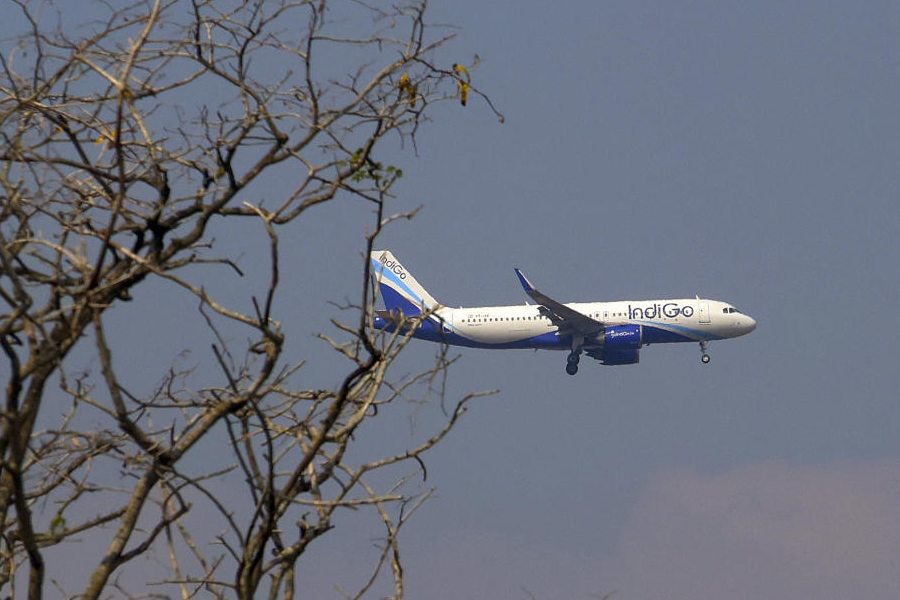On World Environment Day, Narendra Modi "strengthened" the 'Ek Ped Maa Ke Naam' initiative with an aim to plant 10 crore trees across the country between June 5 and September 30.
Roughly 300km westwards of Delhi, which played host to Modi's symbolic gesture of honouring mothers, there's an altogether different storyline unfolding.
In the heart of Jaipur city, a planned development project is threatening to wipe out a natural forest. On June 2, hundreds of locals formed a human chain to protect the Dol Ka Badh forest — over 100 acres of urban greenery with 2,500 fully grown trees. The stretch of land is reportedly undergoing a "facelift" for a government-planned commercial project called Prime Minister Unity Mall. The Rajasthan government also plans to construct hotels, a Fintech Park, and a Rajasthan Mandapam in this biodiversity hotspot.
It is widely reported that the forest is one of Jaipur’s last remaining natural habitats, rich in biodiversity and vital to the city’s ecosystem.
Why are people protesting?
The initiative, promoted as a move toward economic development, is a collaboration between the state government and the Rajasthan State Industrial Development and Investment Corporation (RIICO).
Activists and environmentalists have strongly opposed the proposed clearance of the forest, citing its ecological importance. They've reportedly told many media outlets that the development project could cause irreversible damage to the environment. They see Dol Ka Badh as an essential green space and argue that the felling of trees would further deteriorate the city’s polluted air and eliminate natural habitats.
In response to the threat, activists have launched the ‘Save Dol Ka Badh’ campaign under the ‘Let Jaipur Breathe Movement’, which has gained significant traction over the past few months among local communities, environmental groups and concerned citizens.
Speaking to The Telegraph Online, Sunny Sebastian, the former Vice-Chancellor of Haridev Joshi University of Journalism and Mass Communication in, Jaipur, said, “The felling of trees is grossly unfair because we don't have much greenery in the city and Rajasthan is a semi-desert state and this part in particular is a semi-desert.”
“Cutting down trees is a serious loss—every bit of vegetation and greenery is precious. Rajasthan, which covers 10% of India’s land area, must protect its foliage and natural resources. I believe such actions should be avoided, especially now,” he added.
“This is anti-people and anti-nature. The government’s actions are unjustified and unnecessary. Against all odds, many people are protesting on the streets against the tree cutting,” Sebastian added.
Not a designated forest, says Sebastian
Sebastian has added that Dol Ka Badh is not classified as forest land. He explained that the state-owned land was originally intended for industrial or technopark development but it was largely left unused over time. During this period, trees began to grow, along with dense bushes and a variety of wildlife, including birds, small animals, and butterflies, that gradually made the area their home. Despite not being officially designated as forest land, the site has become an important ecological habitat deserving protection from further destruction.
Tree felling impacts bird species
According to media reports, some campaigners claim that over 80 bird species once frequented the ecologically diverse forest, but their numbers have dipped since tree felling and construction activities began.
Protesters say they might have been open to compromise if the authorities had limited the mall project to 30 acres of the 100-acre site, specifically in the area with lower tree density. The suggestions were ignored by the authorities.
They have also reached out to Rajasthan deputy chief minister Diya Kumari, who once advocated for saving Dol Ka Badh when she was in the Opposition, but hasn't issued any public statement since coming to power.
#SaveDolKaBadh campaign
Protests against the deforestation of Dol Ka Badh Forest have intensified, and the campaign has also gained considerable attention on the Internet. #SaveDolKaBadh has been trending on X.
"If the government is bent on destroying lush forests in the name of projects like PM Unity Mall, it is a threat not only to the environment but also to future generations," the Tribal Army posted.
"Stop the chop," wrote another user.
The ‘Let Jaipur Breathe Movement’ tweeted that to mark World Environment Day, thousands are reaching Dol Ka Badh to protest deforestation and save the last remaining green space in Jaipur.
The government’s tree-planting campaign contrasts sharply with the ground reality of forest destruction. Ecosystems such as the Dol Ka Badh and the Kancha Gachibowli in Hyderabad are going down in the name of development.
The fate of the Dol Ka Badh forest symbolises a larger conflict between development and conservation. While economic growth is essential, it must not come at the cost of irreplaceable natural heritage.










